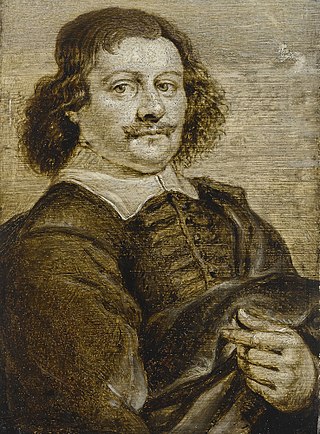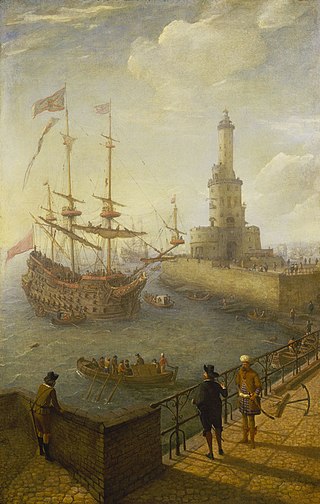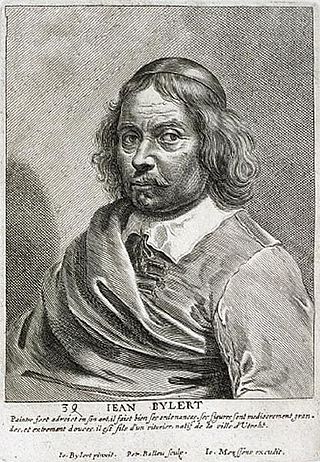
Nicolaes Pieterszoon Berchem was a highly esteemed and prolific Dutch Golden Age painter of pastoral landscapes, populated with mythological or biblical figures, but also of a number of allegories and genre pieces.

Jan Baptist Weenix, also spelled Jan Baptiste Weeninx (1621–c. 1659), was a painter of the Dutch Golden Age. Despite his relatively brief career, he was a very productive and versatile painter. His favourite subjects were Italian landscapes with large figures among ruins, seaside views, and, later in life, large still life pictures of dead game or dogs. He was mainly responsible for introducing the Italian harbour scene into Dutch art, in mid-size paintings with a group of figures in the foreground.

Willemde Heusch was a Dutch landscape painter and engraver.

Jan Dirksz Both was a Dutch painter, draughtsman, and etcher, who made an important contribution to the development of Dutch Italianate landscape painting.

Abraham Willaerts was a Dutch Baroque painter, mostly of marine and harbor scenes. He also painted a number of single and family portraits.

Cornelis van Poelenburgh or Cornelis van Poelenburch, was a Dutch landscape painter and draughtsman. He was the leading representative of the first generation of Dutch landscape painters who were active in Rome in the early 17th century. He was known for small-scale paintings depicting Italianate landscapes with small figures enacting biblical or mythological scenes or in contemporary attire.

Jan Hermansz van Bijlert was a Dutch Golden Age painter from Utrecht, one of the Utrecht Caravaggisti whose style was influenced by Caravaggio. He spent some four years in Italy and was one of the founders of the Bentvueghels circle of northern painters in Rome.

Willem van Bemmel, or Guillaume, or Wilhelm von Bemmel, was a Dutch Golden Age landscape painter who moved to Germany.

Willem van Ingen, or Guilhelmo Den Eersten (1651–1708), was a Dutch Golden Age painter active in Italy.
Jan van Bunnik (1654–1727) was a Dutch Golden Age landscape painter.

Johannes Glauber, was a Dutch Golden Age painter.
Guiliam or Willem Backereel, was a Flemish Baroque landscape painter.

Johannes or Johan Teyler was a Dutch Golden Age painter, engraver, mathematics teacher, and promoter of the technique in color printmaking now known as à la poupée.
Johannes Gottlieb Glauber, was a Dutch Golden Age painter.

Pieter van der Hulst, was a Dutch painter of portraits, still lifes, forest still life, game pieces and animal paintings.

Cavalier Pietro Tempesta, or Pieter Mulier II was a Dutch Golden Age painter active in Italy.
Jacobus de Baen, was a Dutch Golden Age portrait painter who was the son of Jan de Baen.
Francois, or Frans Beeldemaker, was a Dutch Golden Age painter.

Nicolaas Roosendael, was a Dutch Golden Age painter.

Albert van Spiers, was a Dutch Golden Age painter. He is mainly known for interior decorations in the houses of the Canals of Amsterdam.















